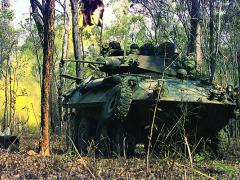Government Secure Solutions to Support Intelligence in Afghanistan
Government Secure Solutions CGI Inc., Manassas, Va., was awarded a $27,019,494 cost-plus-fixed-fee,
New Systems Seek to Connect Troops at the Tip of the Spear
Cool App-titude: MapMyRide and AFCEA Cycle for STEM
Are you a cycling enthusiast?

Mobility Banks Bucks
A recent survey of government employees reveals that federal agencies benefit financially from the flexibility mobile devices afford the work force
Working Toward Worldwide Interoperability

NATO Seeks Umbrella Communications

Bringing Together Signal and Cyber
In his June interview with SIGNAL Magazine, Gen. Keith B. Alexander advocated bringing together the signal community, signals intelligence and the cyber community. In that interview, he said, “We need to think of ourselves not as signals, not as intelligence, not as cyber, but instead as a team that puts us all together.” Yet, that goal raises several questions. How can these concepts be achieved? How can a combination of more than 15,000 system enclaves from the U.S. Army, Navy, Marine Corps and Air Force become interoperable? What technologies are needed in the next five years while insufficient budgets make consolidations difficult?